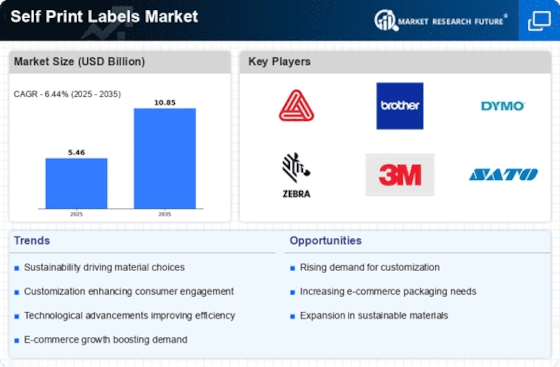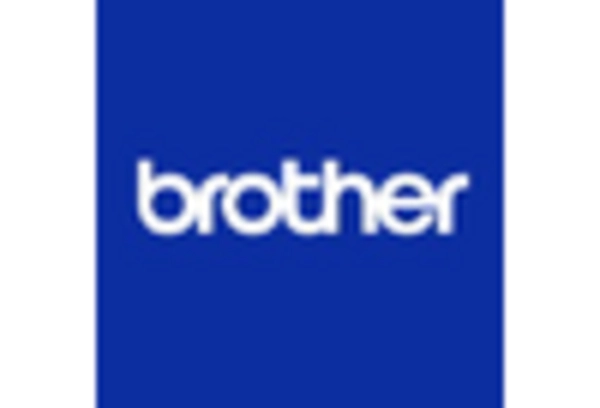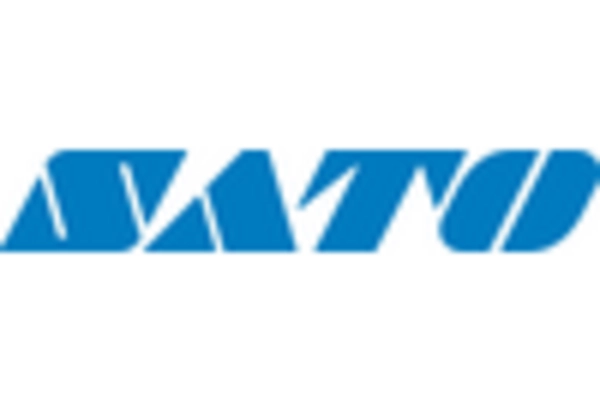Cost Efficiency
Cost efficiency remains a pivotal driver in the Self Print Labels Market. Companies are increasingly recognizing the financial benefits of producing their own labels in-house, which can significantly reduce operational costs. By utilizing self-printing solutions, businesses can eliminate the need for outsourcing label production, thereby saving on both time and money. Recent analyses indicate that companies can save up to 30% on labeling costs by adopting self-printing technologies. This trend is particularly appealing to small and medium-sized enterprises that may have limited budgets. Furthermore, the ability to print labels on-demand allows businesses to minimize waste and optimize inventory management, further enhancing cost efficiency. As such, the Self Print Labels Market is likely to see continued growth as more companies seek to streamline their labeling processes.
Customization Demand
The Self Print Labels Market experiences a notable surge in demand for customization. Businesses increasingly seek personalized labels to enhance brand identity and customer engagement. This trend is particularly pronounced in sectors such as food and beverage, cosmetics, and retail, where unique labeling can differentiate products in a crowded marketplace. According to recent data, the customization segment is projected to grow at a compound annual growth rate of approximately 8% over the next five years. This growth is driven by the need for businesses to adapt to consumer preferences, which increasingly favor tailored experiences. As a result, manufacturers in the Self Print Labels Market are investing in advanced printing technologies that allow for on-demand label production, thereby meeting the diverse needs of their clientele.
Regulatory Compliance
Regulatory compliance is increasingly influencing the Self Print Labels Market. As industries such as pharmaceuticals, food, and chemicals face stringent labeling regulations, the demand for compliant self-printed labels is on the rise. Companies are required to provide accurate information regarding ingredients, usage instructions, and safety warnings, which necessitates high-quality, reliable labeling solutions. The market for self-print labels that meet these regulatory standards is projected to expand, as businesses prioritize compliance to avoid penalties and ensure consumer safety. Moreover, advancements in printing technology enable companies to produce labels that not only comply with regulations but also enhance product visibility and appeal. This focus on compliance is likely to drive innovation within the Self Print Labels Market, as manufacturers develop solutions that cater to these evolving requirements.
Technological Innovations
Technological innovations are reshaping the Self Print Labels Market. The advent of advanced printing technologies, such as digital printing and inkjet systems, has revolutionized the way labels are produced. These innovations enable businesses to achieve higher quality prints, faster production times, and greater flexibility in design. Data indicates that the digital printing segment is expected to grow at a rate of 9% annually, reflecting the increasing adoption of these technologies. Additionally, the integration of software solutions for label design and printing streamlines the process, allowing for more efficient operations. As companies seek to enhance their labeling capabilities, the demand for technologically advanced self-printing solutions is likely to rise. This trend not only improves operational efficiency but also positions businesses to better meet the evolving needs of consumers in the Self Print Labels Market.
Sustainability Initiatives
Sustainability initiatives are becoming a crucial driver in the Self Print Labels Market. As consumers increasingly prioritize eco-friendly products, businesses are responding by adopting sustainable labeling practices. This includes the use of recyclable materials and environmentally friendly inks in self-printed labels. Recent studies suggest that the market for sustainable labels is expected to grow significantly, with a projected increase of 10% annually over the next few years. Companies that embrace sustainability not only enhance their brand image but also meet the growing consumer demand for responsible products. Furthermore, self-printing technologies allow businesses to reduce waste by producing labels only as needed, aligning with sustainability goals. As a result, the Self Print Labels Market is likely to witness a shift towards more sustainable practices, driven by both consumer preferences and regulatory pressures.


















Leave a Comment